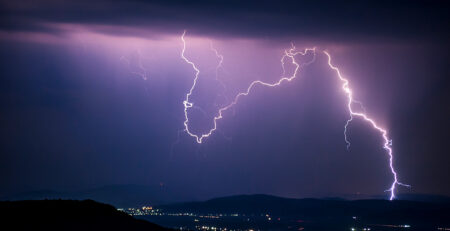Impact of Climate Change on Lightning-Related Risks
Climate change is an issue that affects us all, and its impact on our planet’s weather patterns has been well-documented. One area where these changes are having a significant impact is lightning activity. The frequency and intensity of lightning strikes have been increasing in many parts of the world, which has implications for safety and infrastructure. Lightning can cause serious damage to buildings and electrical equipment, as well as pose a risk to human life.
Let’s understand the impact of climate change on lightning-related risks.
Rising Temperature
One of the factors contributing to this trend is rising temperatures. As the planet warms, the atmosphere becomes more unstable, creating favorable conditions for lightning. Thunderstorms, which are the primary cause of lightning, thrive in warm and humid environments. With global temperatures on the rise, these conditions are becoming more common, leading to more frequent and intense lightning strikes.
Changing Precipitation Patterns
Another factor is changing precipitation patterns. As climate change alters weather patterns, some regions are experiencing more frequent and severe droughts. Drought reduces soil moisture, which can lead to increased buildup of electrical charges in the atmosphere. This buildup can result in lightning, which can strike without warning and pose a significant risk to life and property.
Lightning-related Risks
The impact of climate change on lightning-related risks is a growing concern. Lightning can cause serious damage to buildings, electrical equipment, and other critical infrastructure. It can also cause power outages, which can be particularly problematic in areas where electricity is essential for medical equipment and other critical services. In addition, lightning strikes can pose a serious risk to human life. Even lightning that strikes some distance away can still pose a risk, as it can potentially cause surges of electrical currents to flow through the ground and into buildings, causing damage or injury.
One Stop Solution!

To mitigate these risks, it is essential to take proactive measures, such as installing lightning protection systems and ensuring proper earthing of electrical systems. These systems can help divert lightning currents safely to ground, reducing the risk of damage to equipment and structures, and protecting against electrical surges that can threaten the safety of occupants.
Conclusion
At Electrogrip, we are committed to providing innovative and high-quality earthing and lightning protection products and services to protect against the risks posed by lightning. Our experts have extensive knowledge and experience in designing and installing reliable lightning protection and earthing solutions for a wide range of applications.
Contact us today to learn more about how we can help you stay safe and secure in the face of lightning-related risks.
If you liked our blog on, ‘ Impact of Climate Change on Lightning-related Risks’, be sure to check out our other blogs by clicking here.











Leave a Reply